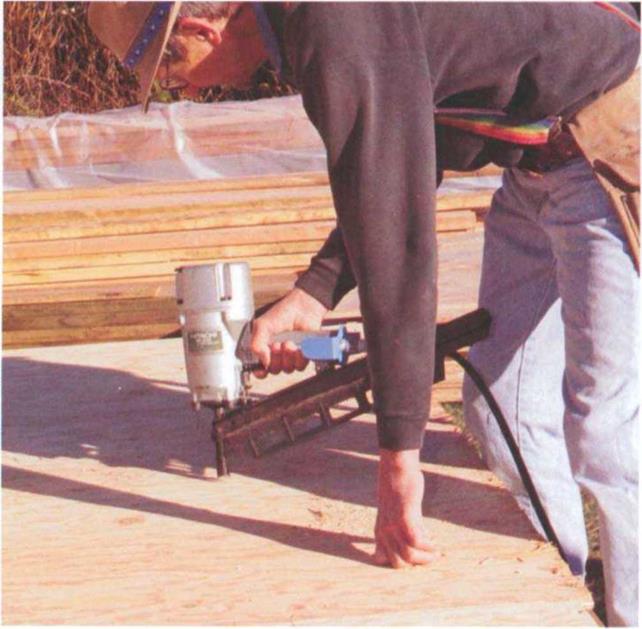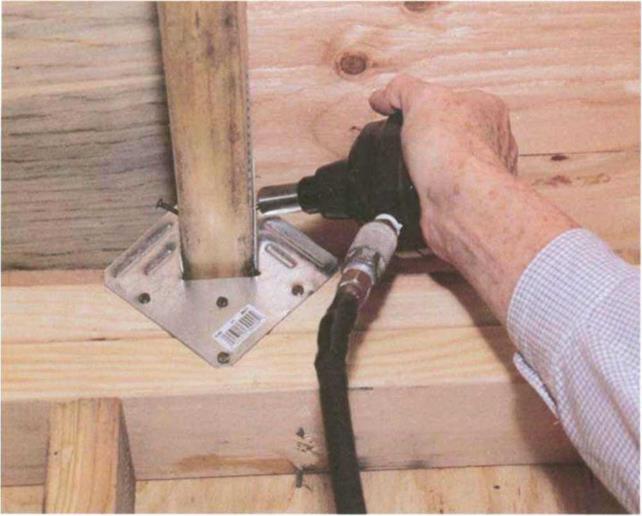PNEUMATIC NAILERS
My first pneumatic tool drove only staples, and I used it to nail subfloor and roof sheathing. Today, pneumatic nailers drive many types of fastener. In some areas of the country, they are almost as common on job sites as hammers.
What makes a pneumatic nailer so appealing is its speed. The nails are automatically fed into the nailer from a clip or coil (which can hold 200 nails or more), so you don’t have to keep reaching into your tool belt for nails.
Today, there’s a nailer for every job, from rough framing to roofing to the finest finish work. I own two framing nailers, a finish nailer, and a palm nailer. Both framing nailers drive 8d or 16d nails (see the photo below)—one feeds the nails from a clip, and the other feeds them from a coil. Both fit well in my hand,
|
|
seldom jam, and require very little maintenance. They take a drop of oil twice a day and need to be cleaned with a wire brush now and then, but that’s about it.
The same is true with my finish nailer, which drives nails from 1 in. (brads) to 2У2 in. (8d) long (see the photo above). Finish nailers not only drive the nails but can also set them below the surface of the wood, which saves a lot of nailsetting time. I use my palm nailer to drive nails in hard-to-get-at places, where it’s not easy to swing a hammer. It’s a
great tool for nailing in hurricane ties and joist hangers (see the photo on p. 56).
Most nailers operate off compressed air, though there are also electrically powered brad nailers and staplers and propane-powered framing and finish nailers. Buying a nailer and the necessary air compressor, gauges, and air hoses represents a substantial investment, though these items can pay for themselves in short order due to increased productivity.
Pneumatic-nailer safety
• A pneumatic nailer is as dangerous as a gun and needs to be treated with respect.
• Read and carefully follow the instruction manual regarding maintenance and use.
• Don’t point a nailer at yourself or at others.
• Don’t walk around with your finger on the trigger. You might bump the nailer against your leg, release the safety, and fire a nail accidentally.
• Adjust the air pressure as needed (larger nails require more pressure). But don’t exceed the recommended amount of air pressure.
• Wear safety glasses or goggles.
• Don’t nail with the gun in front of your face, especially if you are working on a vertical surface. If you hit a hard knot or metal strap, the gun can bounce back and strike you.
• Disconnect the gun from the air compressor when clearing a jammed nail.
• When nailing studs to a plate, drive the low nail first. Then remove the hand holding the stud and drive the high nail. If you drive the high nail first, sooner or later you will miss the wood plate and drive a nail through your hand.
• Take a break now and then to stay focused. An unfocused mind can cause you to shoot a nail into your body, which will bring you back to reality like an early morning alarm clock, sudden and unpleasant.
|









Leave a reply